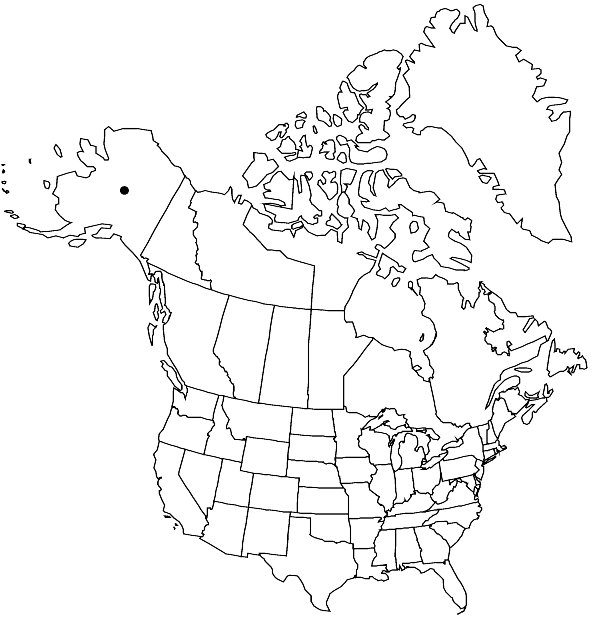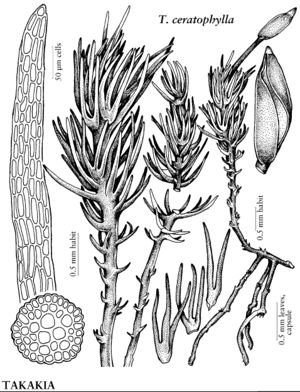Takakia ceratophylla
Oesterr. Bot. Z. 110: 444, fig. 1. 1963,.
Plants absent distinctive odor when dry, distal portion of leafy shoot readily caducous. Stems in cross section with 2 layers of thicker walled epidermal cells, stoloniferous stems mainly subterranean. Leaves typically of thick-walled cells, in 4 segments, connate at base, cross section of each segment with 3–5 inner cells and 10–15 smaller outer epidermal cells, outer cells small, 25 × 10 µm, regularly arranged. Slime hairs thick-walled. Sporophytes infrequent. Capsule terminal, usually single.
Phenology: Capsules mature late summer–early fall (Jul–Sep).
Habitat: Uncommon to rare on moist soils and shaded banks, slopes and over rocks in tundra
Elevation: low to moderate elevations (70-700 m)
Distribution

Alaska, Asia (China in Yunnan, India in Sikkim, Nepal).
Discussion
Takakia ceratophylla appears to be somewhat tolerant of desiccation. Frequently it grows with other drought-tolerant bryophytes such as Andreaea and Gymnomitrion. The shoots are more rigid than those of T. lepidozioides, and leaf arrangement is more regular. Rhizomatous shoots are predominantly subterranean.
Selected References
None.
